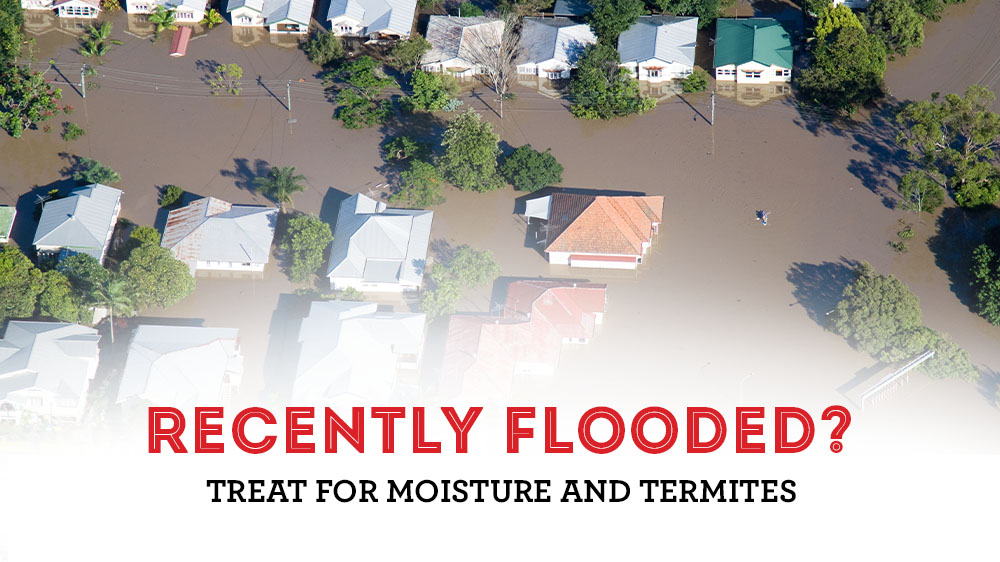The recent rain and floods have done an incredible amount of damage to homes and businesses across the state. To magnify the problem, termites look at the amount of moisture around and don’t see a problem but an opportunity to thrive. Pests are survivors.
As many people will be opening up their walls to let their studs dry out, this is a perfect time to not only do a surface repair but also treat for termites. The type of termite that causes the most damage in North America is the subterranean termite. These pests require ample moisture and then add a food source that contacts moist areas of the soil, and there you have it – perfect conditions for an infestation.
Most pests will seek higher ground to get out of floodwaters. Some insects, like fire ants, will float on water to survive. So, one might think that termites might drown in water. Well, the answer to that is “no” as termites have been around for 250 million years and have survived the ice age, natural disasters, and dinosaurs’ extinction. In short, these pests have strategies to survive.
One strategy for survival is in the way termites breathe. Termites have a system of holes (spiracles) along the sides of their bodies. When around bodies of water, they can close their spiracles for extended periods. One study found that they could survive underwater for over 19 hours. If that doesn’t amaze you, then consider this – they can also tread water for up to 4 days.
Flooding causes damp and wet conditions to become attractive to termites. In many cases, wood that is wet for extended periods of time may lead to an above-ground termite infestation as the termites move into the damp wood. If flooding has damaged your foundation or footing, termites can gain access to your structure
If a termite baiting system is installed around a flooded structure and the floodwaters are contaminated with pollutants, the bait matrix can be tainted and compromised in terms of attractiveness to termites. In this situation, the bait and possibly the bait housing would need to be replaced.
Soil treatments may require remediation or re-treatment if the soil has shifted or eroded or if sediment is deposited over a treated area. Likewise, flood waters may cause chemical treatments applied directly to wood for structural protection to leach out, requiring re-treatment.
Excess moisture is the biggest threat to a home’s structure. The moisture will compromise the strength of the wood, promote mold and fungi growth and attract pests. One way to combat that is with Bora-Care with Mold-Care. It acts as a moisture preventative against the damaging effects of water and the conditions that promote infect infestation. The Bug Man provides moisture treatment to open studs with at least 8% or less of moisture. A termite preventative can be performed as well with Bora Care while the walls are open to your structure.
Based on history, floods and standing water problems will not kill termites. At best, they provide termites more material to feed on due to increased moisture levels. That is all the more reason that pest management professionals need to get out and make sure their termite protection and moisture treatments are in place. Frequent inspection is the key to termite control success.
If a flood has impacted you, The Bug Man can help by making a thorough inspection of the flooded property/structures to determine if your treatment has been compromised. We can suggest appropriate steps for remediation if needed. Give us a call (225) 923-2847




